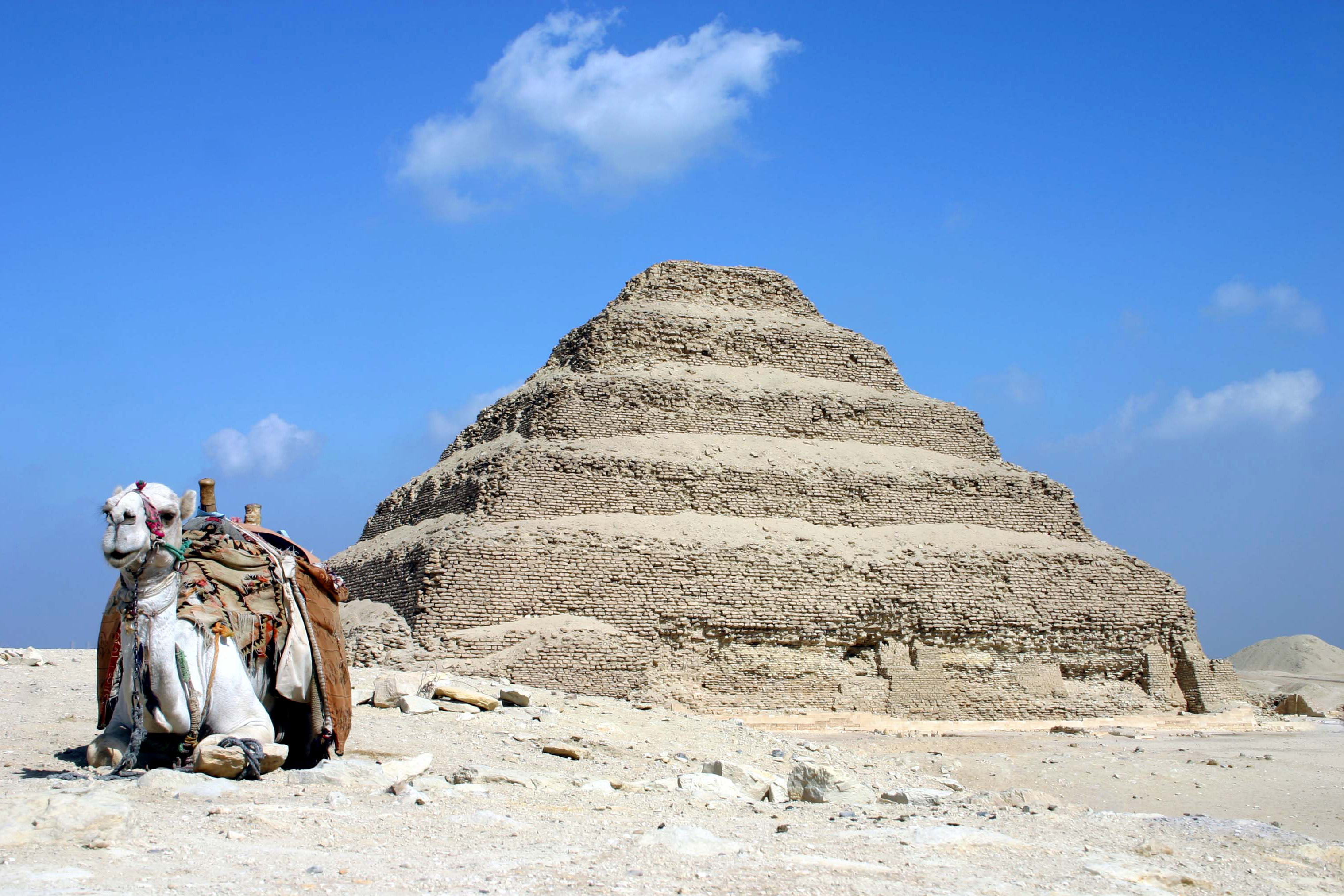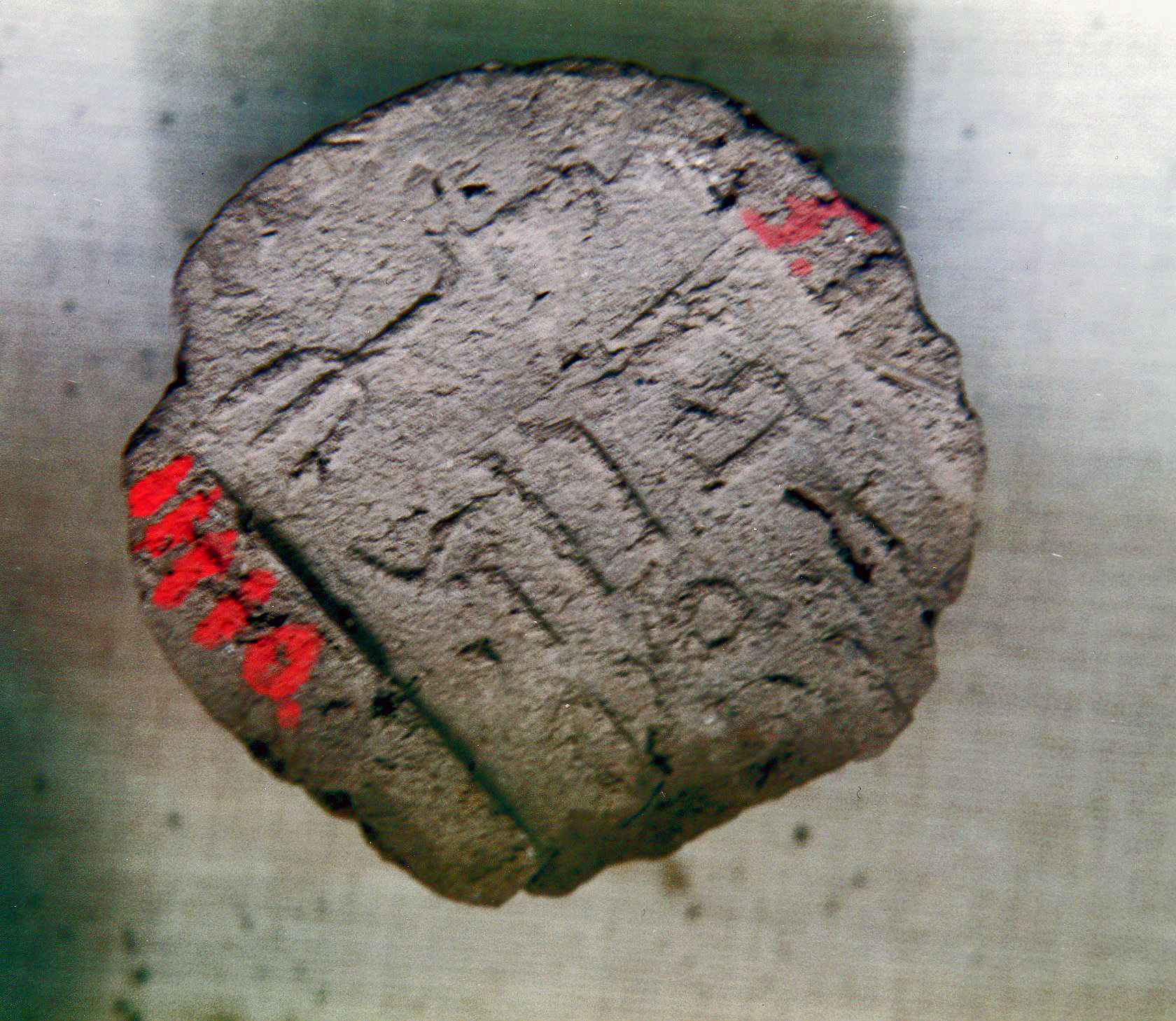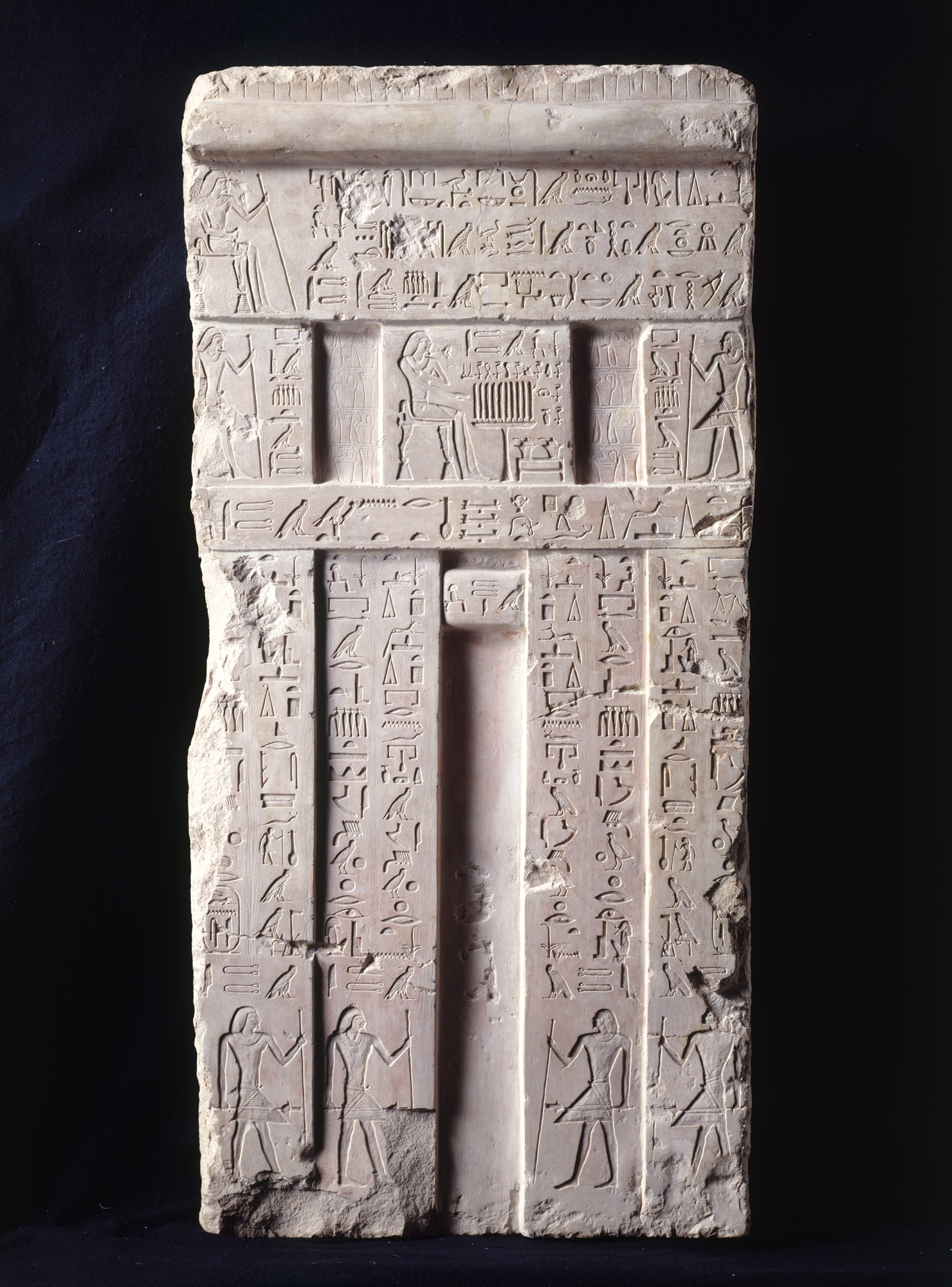|
Djoser
Djoser (also read as Djeser and Zoser) was an ancient Egyptian pharaoh of the 3rd Dynasty during the Old Kingdom, and was the founder of that epoch. He is also known by his Hellenized names Tosorthros (from Manetho) and Sesorthos (from Eusebius). He was the son of King Khasekhemwy and Queen Nimaathap, but whether he was also the direct successor to their throne is unclear. Most Ramesside king lists identify a king named '' Nebka'' as preceding him, but there are difficulties in connecting that name with contemporary Horus names, so some Egyptologists question the received throne sequence. Djoser is known for his step pyramid, which is the earliest colossal stone building in ancient Egypt. Identity The painted limestone statue of Djoser, now in the Egyptian Museum in Cairo, is the oldest known life-sized Egyptian statue. Today, at the site in Saqqara where it was found, a plaster copy of it stands in place of the original. The statue was discovered during the Antiqui ... [...More Info...] [...Related Items...] OR: [Wikipedia] [Google] [Baidu] |
Pyramid Of Djoser
The pyramid of Djoser, sometimes called the Step Pyramid of Djoser or Step Pyramid of Horus Netjerikhet, is an archaeological site in the Saqqara necropolis, Egypt, northwest of the ruins of Memphis.Bard, Kathryn A., and Jean-Philipee Lauer, eds. 1999. "Saqqara, pyramids of the 3rd Dynasty" ''Encyclopedia of the Archaeology of Ancient Egypt''. London: Routledge. 859 It is the first Egyptian pyramid to be built. The 6-tier, 4-sided structure is the earliest colossal stone building in Egypt. It was built in the 27th century BC during the Third Dynasty for the burial of Pharaoh Djoser. The pyramid is the central feature of a vast mortuary complex in an enormous courtyard surrounded by ceremonial structures and decoration. The pyramid went through several revisions and redevelopments of the original plan. The pyramid originally stood tall, with a base of and was clad in polished white limestone. As of 1997 the step pyramid (or proto-pyramid) was considered to be the earliest ... [...More Info...] [...Related Items...] OR: [Wikipedia] [Google] [Baidu] |
Third Dynasty Of Egypt
The Third Dynasty of ancient Egypt (Dynasty III) is the first dynasty of the Old Kingdom. Other dynasties of the Old Kingdom include the Fourth, Fifth and Sixth. The capital during the period of the Old Kingdom was at Memphis. Overview After the turbulent last years of the Second Dynasty, which might have included civil war, Egypt came under the rule of Djoser, marking the beginning of the Third Dynasty.Dodson, Hilton, ''The Complete Royal Families of Ancient Egypt'', 2004 Both the Turin King List and the Abydos King List record five kings,Toby A.H. Wilkinson, ''Early Dynastic Egypt'', Routledge, 2001 while the Saqqara Tablet only records four, and Manetho records nine,Aidan Dodson: ''The Layer Pyramid of Zawiyet el-Aryan: Its Layout and Context.'' In: ''Journal of the American Research Center in Egypt (JARCE)'', No. 37 (2000). American Research Center (Hg.), Eisenbrauns, Winona Lake/Bristol 2000, , pp. 81–90. many of whom did not exist or are simply the same king und ... [...More Info...] [...Related Items...] OR: [Wikipedia] [Google] [Baidu] |
Nimaethap
Nimaathap (also read as Nima'at-Hapi and Nihap-ma'atSilke Roth: ''Die Königsmütter des Alten Ägypten von der Frühzeit bis zum Ende der 12. Dynastie'' (= ''Ägypten und Altes Testament'', vol. 46). Harrassowitz, Wiesbaden 2001, , p. 383.) was an ancient Egyptian queen consort at the transition time from 2nd Dynasty to 3rd Dynasty. Nimaathap may have acted as regent for her son Djoser.Joyce A. Tyldesley, Chronicle of the Queens of Egypt: From Early Dynastic Times to the Death of Cleopatra, Thames & Hudson, 2006 She is known to have enjoyed a long-lasting mortuary cult.Joyce Tyldesley: ''Chronicle of the queens of Egypt: from early dynastic times to the death of Cleopatra''. Thames & Hudson, London 2006, , p. 25 & 35 - 39. Attestations Nimaathap's name appears on clay seal impressions discovered mostly in the tomb of king (pharaoh) Khasekhemwy, the last ruler of the 2nd dynasty. Other seals were found at Beit Khallaf at the burial sites of the mastaba tombs ''K1'' and ''K2''; ... [...More Info...] [...Related Items...] OR: [Wikipedia] [Google] [Baidu] |
Sanakhte
Sanakht (also read as Hor-Sanakht) is the Horus name of an ancient Egyptian king (pharaoh) of the Third Dynasty during the Old Kingdom. His chronological position is highly uncertain (though he is more likely to have reigned towards the end of the dynasty), and it is also unclear under which Hellenized name the ancient historian Manetho could have listed him. Many Egyptologists connect Sanakht with the Ramesside cartouche name ''Nebka''. However, this remains disputed because no further royal title of that king has ever been found; either in contemporary source or later ones. There are two relief fragments depicting Sanakht originally from the Wadi Maghareh on the Sinai Peninsula. Identity Sanakht's identity and position in the Third Dynasty is not entirely clear and remains the subject of debate. While Sanakht's existence is attested by seal fragments from mastaba K2 at Beit Khallaf and a graffito, his position as the founder of the Third Dynasty, as recorded by Manetho and th ... [...More Info...] [...Related Items...] OR: [Wikipedia] [Google] [Baidu] |
Saqqara
Saqqara ( : saqqāra[t], ), also spelled Sakkara or Saccara in English , is an Egyptian village in the markaz (county) of Badrashin in the Giza Governorate, that contains ancient burial grounds of Egyptian royalty, serving as the necropolis for the ancient Egyptian capital, Memphis, Egypt, Memphis. Saqqara contains numerous pyramids, including the Pyramid of Djoser, sometimes referred to as the Step Pyramid, and a number of mastaba tombs. Located some south of modern-day Cairo, Saqqara covers an area of around . Saqqara contains the oldest complete stone building complex known in history, the Pyramid of Djoser, built during the Third Dynasty of Egypt, Third Dynasty. Another sixteen Egyptian kings built pyramids at Saqqara, which are now in various states of preservation. High officials added private funeral monuments to this necropolis during the entire History of ancient Egypt, Pharaonic period. It remained an important complex for non-royal burials and cult ceremonies for more ... [...More Info...] [...Related Items...] OR: [Wikipedia] [Google] [Baidu] |
Sekhemkhet
Sekhemkhet (also read as Sechemchet) was an ancient Egyptian king (pharaoh) of the Third Dynasty of Egypt, 3rd Dynasty during the Old Kingdom of Egypt, Old Kingdom. His reign is thought to have been from about 2648 BC until 2640 BC. He is also known under his later traditioned birth name Djoser-teti and under his Hellenization, Hellenized name Tyreis (by Manetho; derived from ''Teti'' in the Abydos King List). Sekhemkhet was probably the brother or eldest son of king Djoser. Little is known about this king, since he ruled for only a few years. However, he erected a step pyramid at Saqqara and left behind a well known rock inscription at Wadi Maghareh (Sinai Peninsula). Reign The duration of Sekhemkhet's reign is believed to have been six to seven years. The royal Turin King List, Turin Canon attributes six years of reign to Sekhemkhet, a figure also proposed by Myriam Wissa based on the unfinished state of Sekhemkhet's pyramid. Using his reconstruction of the Palermo Stone (Fif ... [...More Info...] [...Related Items...] OR: [Wikipedia] [Google] [Baidu] |
Nebka
Nebka (meaning "Lord of the '' ka''") is the throne name of an ancient Egyptian pharaoh of the Third Dynasty during the Old Kingdom period, in the 27th century BCE. He is thought to be identical with the Hellenized name Νεχέρωχις (Necherôchis or Necherôphes) recorded by the Egyptian priest Manetho of the much later Ptolemaic period. Nebka's name is otherwise recorded from the near contemporaneous tomb of a priest of his cult as well as in a possible cartouche from Beit Khallaf, later New Kingdom king lists and in a story of the Westcar Papyrus. If the Beit Khallaf seal impression is indeed a cartouche of Nebka, then he is the earliest king to have thus recorded his throne name, otherwise this innovation can be ascribed to Huni. Nebka is thought by most Egyptologists to be the throne name of Sanakht, the third or fourth ruler of the Third Dynasty, who is sparsely attested by archaeological evidence and must have had only a short reign. Older hypotheses followe ... [...More Info...] [...Related Items...] OR: [Wikipedia] [Google] [Baidu] |
Old Kingdom Of Egypt
In ancient Egyptian history, the Old Kingdom is the period spanning –2200 BC. It is also known as the "Age of the Pyramids" or the "Age of the Pyramid Builders", as it encompasses the reigns of the great pyramid-builders of the Fourth Dynasty of Egypt, Fourth Dynasty, such as King Sneferu, under whom the art of pyramid-building was perfected, and the kings Khufu, Khafre and Menkaure, who commissioned the construction of the Giza pyramid complex, pyramids at Giza. Ancient Egypt, Egypt attained its first sustained peak of civilization during the Old Kingdom, the first of three so-called "Kingdom" Egyptian chronology, periods (followed by the Middle Kingdom of Egypt, Middle Kingdom and New Kingdom of Egypt, New Kingdom), which mark the high points of civilization in the lower Nile Valley. The Periodization of Ancient Egypt, concept of an "Old Kingdom" as one of three "golden ages" was coined in 1845 by the German Egyptology, Egyptologist Christian Charles Josias von Bunsen, Baron ... [...More Info...] [...Related Items...] OR: [Wikipedia] [Google] [Baidu] |
Hetephernebti
Hetephernebti was a queen of the Third Dynasty of the Old Kingdom of ancient Egypt. She was the only known wife of Pharaoh Djoser. Hetephernebti and a King's Daughter Inetkaes were named on stelae found around Djoser's Saqqara pyramid complex and on a Heliopolis relief showing Djoser accompanied by the two of them. Among her titles were "one who sees Horus" ''(m33.t-ḥrw-)'' and "great of sceptre" ''(wr.t-ht=s),'' both common for important queens in this period, also, she was called "King's Daughter", which means she was possibly a daughter of Djoser's predecessor Khasekhemwy and Nimaathap Nimaathap (also read as Nima'at-Hapi and Nihap-ma'atSilke Roth: ''Die Königsmütter des Alten Ägypten von der Frühzeit bis zum Ende der 12. Dynastie'' (= ''Ägypten und Altes Testament'', vol. 46). Harrassowitz, Wiesbaden 2001, , p. 383.) was ..., thus a sister or half-sister of her husband.Dodson & Hilton, p.48 Sources {{Authority control Queens consort of the Third Dynasty of Eg ... [...More Info...] [...Related Items...] OR: [Wikipedia] [Google] [Baidu] |







